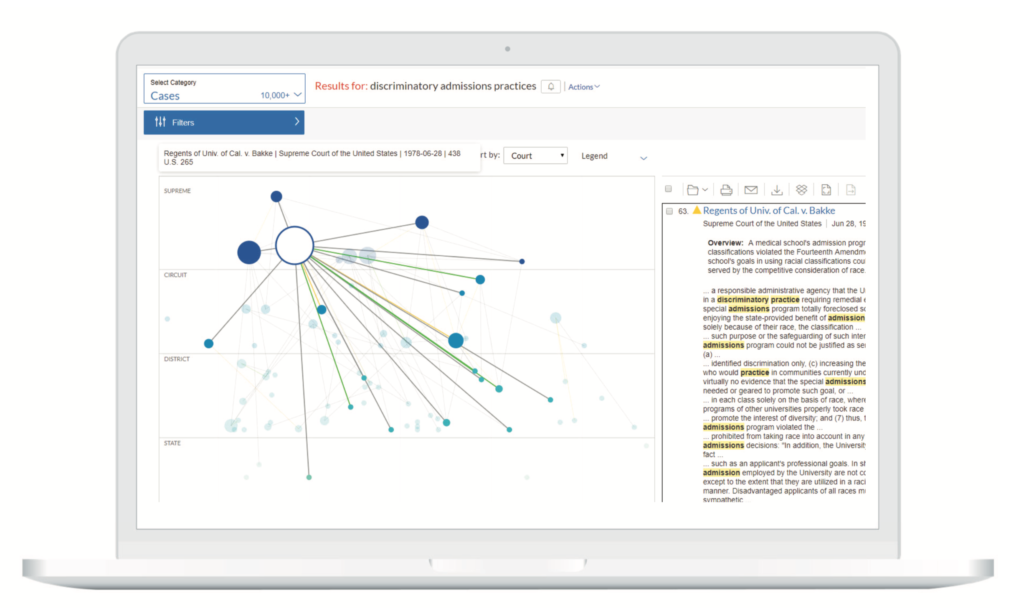
The next generation of lawyers have a strong preference for digital visual tools, according to a major survey of American law students aimed at understanding future lawyers’ attitudes to legal research.
Moreover, while law students understandably said they liked certain visually focused legal research platforms because they were ‘easy to use’ and helped them to ‘find information quickly’, whether a platform had an ‘attractive appearance or design’ was also a notable factor for just under half of the students.
I.e. students didn’t just respond positively to visual representations of legal data (see image below), they often were responding to visual design. In a world used to unending masses of text, this is an interesting evolution.
The finding comes from a LexisNexis survey conducted by PwC of 5,061 US law students from 201 law schools.
Law students from Generation Z are ‘digital natives who grew up with technology at the centre of their lives. These digital natives are leveraging their mastery of technology to drive productivity gains in the legal profession,’ the report stated.
Generation Z is generally defined as people born in the late 1990s and early 2000s.
When it comes to choosing a legal research platform, almost 73% of students surveyed cited ease-of-use, and just over 60% said speed of finding information as the determining factors.
Students also found that legal analytics tools are ‘extremely or somewhat helpful for performing analysis or drafting legal memoranda (76%),’ while 77% said visualisation tools are ‘very helpful’ for finding relevant results.

Services from legal tech giants LexisNexis and Westlaw are by far the main preferences for the budding lawyers, with half (50%) of all law students saying they prefer Lexis Advance for legal research compared to Westlaw (46%), along with Bloomberg Law (0.5%), other (0.5%), and those who had no preference (2.5%).
What does this tell us? In many ways it perhaps tells us what we already guessed, i.e. that people who grew up with a screen as part of their lives, in some cases from a very early age, don’t find digital tools a challenge and especially like visual representations of data, as opposed to just blocks of text.
Will this have wider implications? We’ve already been moving in the direction of better dashboards and more intuitive ways of displaying information in the legal sector, but this research will only help to focus minds of tech developers on building more visually easy to digest user interfaces.
It also perhaps suggests that the legal design movement, which often relies on more visual elements to improve the ability of a contract to communicate clearly with its reader, is on the right track – at least for the younger generation of lawyers.
One final finding is that despite the best efforts of Bloomberg Law and others to make inroads into the legal research and analytics field, the Big Two continue to dominate the field, with 96% of the research market according to this student survey, at least in the US. Of course, that finding may relate to what research tools certain law schools have signed up to.